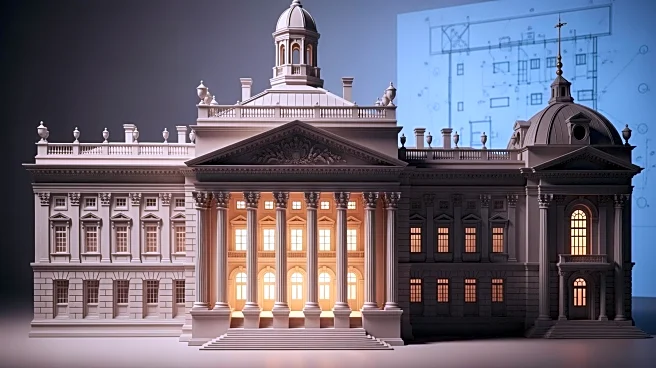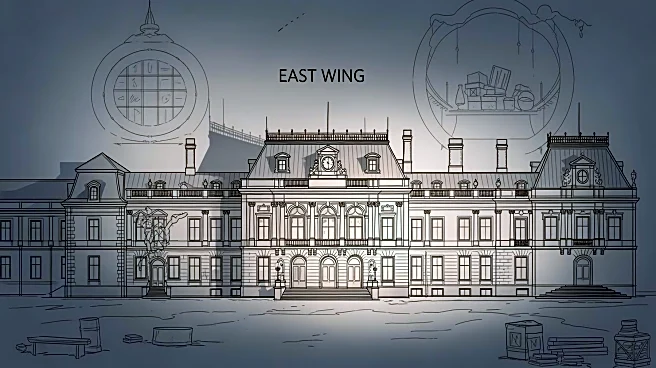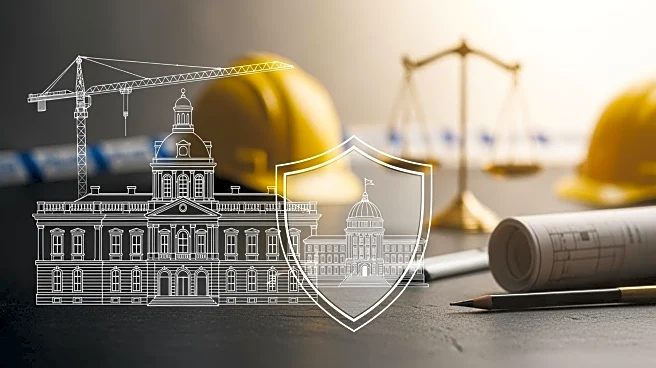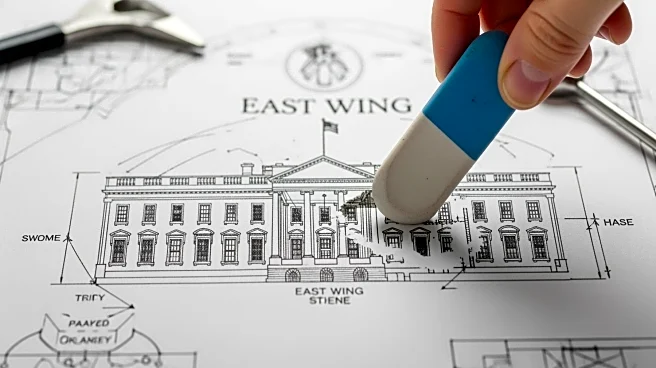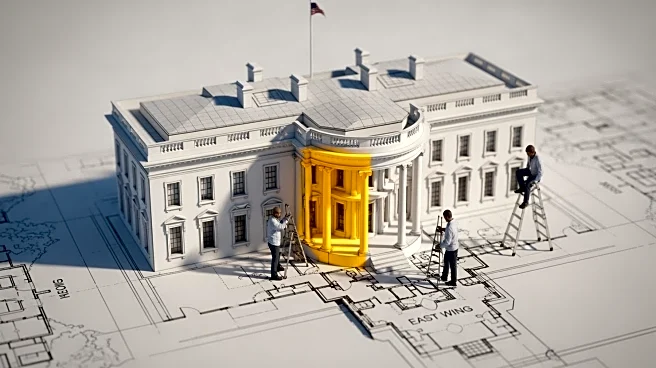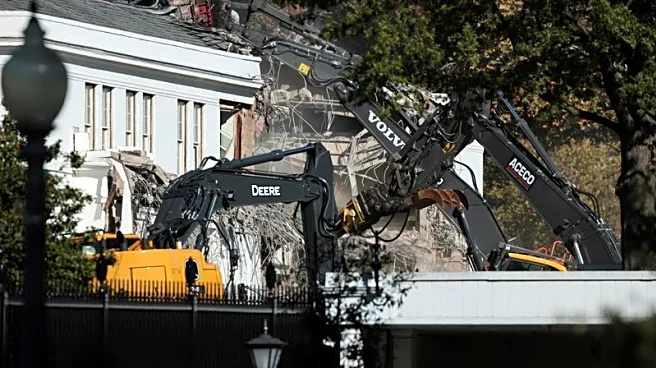What's Happening?
The National Trust for Historic Preservation has called on the Trump administration to pause the demolition of the East Wing of the White House, where a new ballroom is planned. The Trust, along with other
organizations like the Society of Architectural Historians and the American Institute of Architects, has expressed concerns about the size and impact of the proposed 90,000-square-foot ballroom. These groups argue that the construction could overwhelm the existing architectural proportions of the White House. Despite these concerns, the White House has not responded directly to the requests for a pause but has criticized the opposition as 'manufactured outrage.' The construction plans are expected to be submitted to the National Capital Planning Commission soon.
Why It's Important?
The proposed construction of a new ballroom at the White House raises significant concerns about historic preservation and architectural integrity. The White House is a symbol of American heritage, and changes to its structure can have lasting impacts on its historical value. The opposition from preservation groups highlights the tension between modernization and preservation of national landmarks. If the construction proceeds without thorough review, it could set a precedent for future alterations to historic sites without adequate public consultation. This situation also reflects broader debates about the balance between development and conservation in the U.S.
What's Next?
The next steps involve the submission of construction plans to the National Capital Planning Commission, which will review the project. The outcome of this review could influence whether the demolition and construction proceed as planned. Preservation groups may continue to advocate for a pause and further public consultation. The White House's response to these developments will be crucial in determining the project's future. Stakeholders, including government agencies and civil society groups, will likely continue to engage in discussions about the project's implications.
Beyond the Headlines
This development touches on deeper issues of how national heritage sites are managed and the role of public input in such decisions. The controversy also highlights the challenges of balancing modernization with the preservation of historical integrity. The outcome of this situation could influence future policies on how changes to national landmarks are approached, potentially affecting how similar projects are handled across the country.
